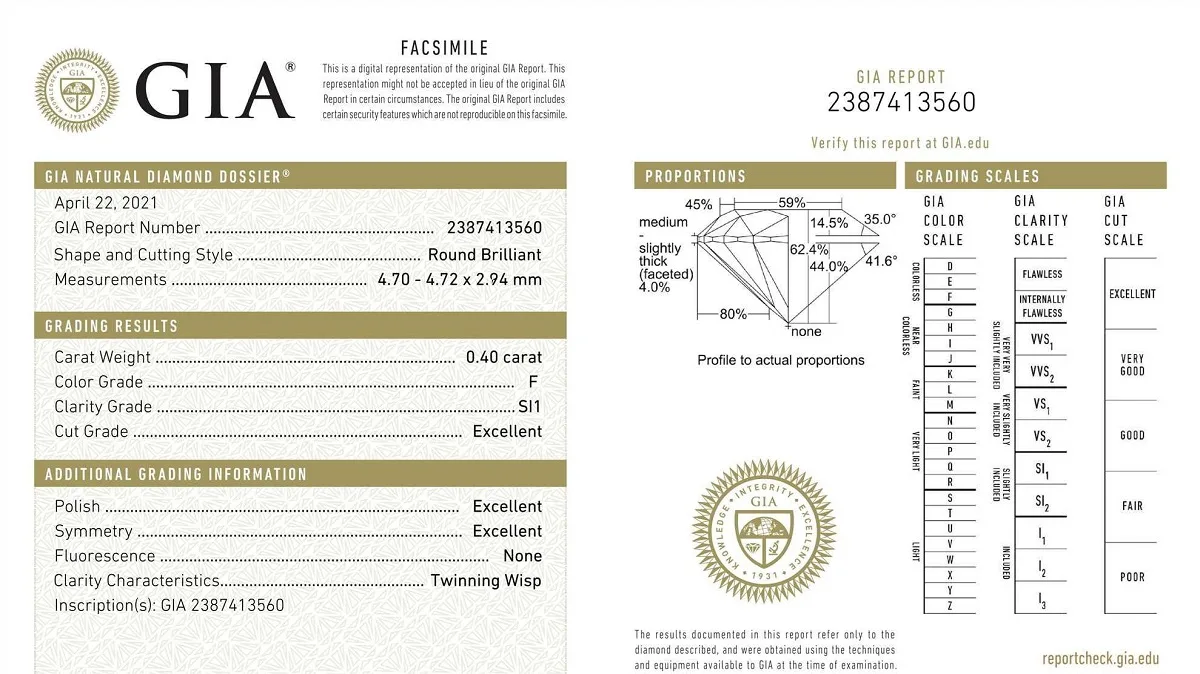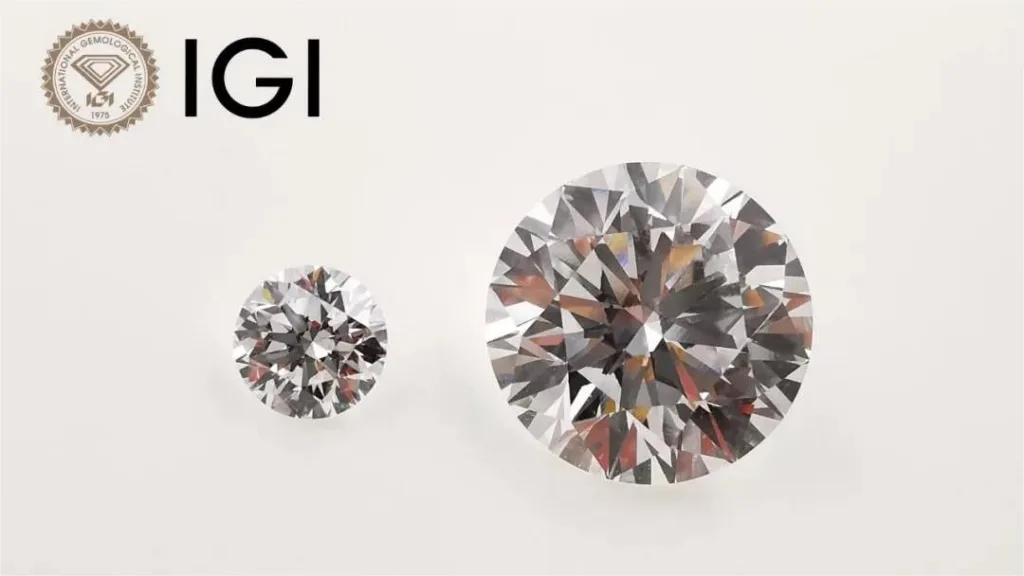The Gemological Institute of America (GIA) is a renowned and globally respected organization in the field of gemology and diamond grading. Established in 1931, GIA has been at the forefront of gemological research, education, and certification. Their primary mission is to ensure the integrity and reliability of information regarding gemstones, including diamonds, to protect consumers and maintain trust within the industry.
One of GIA’s significant roles is the certification of diamonds, both natural and lab-grown. In this context, a lab-grown diamond refers to a diamond that is created in a controlled laboratory environment, as opposed to diamonds that form naturally within the Earth’s crust. GIA’s certification process for lab-grown diamonds, similar to natural diamonds, involves a thorough examination and assessment of various diamond characteristics.
The GIA certification for lab-grown diamonds provides valuable information to consumers, jewelers, and the diamond trade in general. Here are some key aspects of GIA’s certification process for lab-grown diamonds:
- Identification: GIA employs advanced techniques and equipment to differentiate between natural and lab-grown diamonds. They examine the diamond’s growth patterns, inclusions, and other unique features to make this determination.
- Carat Weight: GIA measures the diamond’s weight in carats, which is a standard unit of measurement for gemstones. This measurement is crucial as it affects the diamond’s value.
- Color Grade: GIA grades lab-grown diamonds on a color scale ranging from D (colorless) to Z (light yellow or brown). The less color a diamond exhibits, the higher its grade.
- Clarity Grade: Clarity refers to the presence of internal or external flaws, known as inclusions and blemishes, respectively. GIA assigns a clarity grade, ranging from Flawless (no inclusions or blemishes visible under 10x magnification) to Included (inclusions and/or blemishes visible to the naked eye).
- Cut Grade: The cut of a diamond affects its sparkle and overall beauty. GIA evaluates the diamond’s cut based on factors like symmetry, polish, and proportions. The cut grade ranges from Excellent to Poor.
- Finish: GIA assesses the diamond’s finish, which includes factors like the quality of facet junctions, girdle thickness, and culet size. These elements contribute to the overall craftsmanship of the stone.
- Fluorescence: Some lab-grown diamonds may exhibit fluorescence when exposed to ultraviolet (UV) light. GIA notes the presence and strength of fluorescence, which can impact a diamond’s appearance.
GIA provides all this information in a detailed report, commonly known as a “diamond grading report” or “certificate.” This report serves as an essential document when buying or selling diamonds, as it offers an objective assessment of the diamond’s characteristics.
For consumers, GIA certification offers assurance and transparency. It empowers buyers to make informed decisions about their purchases, knowing they are receiving a diamond that has been rigorously examined and accurately graded. Jewelers and retailers also benefit from GIA certification, as it builds trust with customers and simplifies the process of valuing and selling diamonds.
In conclusion, GIA’s certification of lab-grown diamonds plays a vital role in the diamond industry. It ensures that consumers receive accurate and reliable information about the diamonds they purchase, regardless of whether they are natural or lab-grown. GIA’s commitment to integrity and transparency in gemstone grading continues to uphold the high standards of the diamond trade, making it an indispensable resource for both professionals and amateurs in the world of diamonds.




